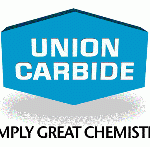Highlights That You Should Know
- The 2012 Submission Period is scheduled to occur February 1, 2012 - June 30, 2012.
- Production (manufacture or import) volumes are required for 2010 and 2011--- with manufacturing, processing and use information from 2011.
- TSCA Form U impacts all chemical manufacturers and importers and certain chemical users and processors.
- IUR is now called CDR Chemical Data Reporting Rule.
- The CDR Rule includes significant changes.
Reporting thresholds are for (a) substances in cumulative volumes of 25,000 lbs or more in the specific reporting year (2010, 2011) and (b) p rocessing and use information for substances manufactured (including imported) 100,000 lbs (not 300,000 lbs) or more in 2011.
How to Stay Up-to-Date with Incoming TSCA Information*
Now that EPA has scheduled the submission period and defined what has to be reported, and how it must be done, Emilcotts EHS group is compiling a centralized, online resource to help our clients complete the reporting process accurately and on time. As they become available, these materials will be emailed to Emilcott TSCA News Update subscribers or upon request:
- A comprehensive summary of the revised requirements and critical changes to the 2012 Form U submission (available upon request within a week).
- Notification of EPA seminars and other TSCA-related information activities. Emilcott will create updates for these sessions as they occur.
- Free informational TSCA-related CDR Rule Form U webinars.
Visit our TSCA Resource Center on the Emilcott home page frequently for EPA docs and other TSCA links.
*Continued technical information, updates and webinar invitations will be sent to subscribers of Emilcott's TSCA News Update. To subscribe or find out more information, call 800-886-3645 or send an email to pkaufmann (at) emilcott.com.
Additional Questions?
If you need any assistance related to the TSCA New Chemicals regulatory requirements or the potential changes due to the IUR/CDR Rule, Emilcott can guide you through the reporting process. Have questions about your 2006 TSCA Submission (or lack of)? We can also help you navigate the maze of reporting a potential Form U violation from prior filing years to the EPA. If you are gearing up for TSCA information gathering, subscribe to the Emilcott TSCA News Update, check the Emilcott TSCA Resource Center often, and, of course, stay tuned and subscribe to EHSWire!









